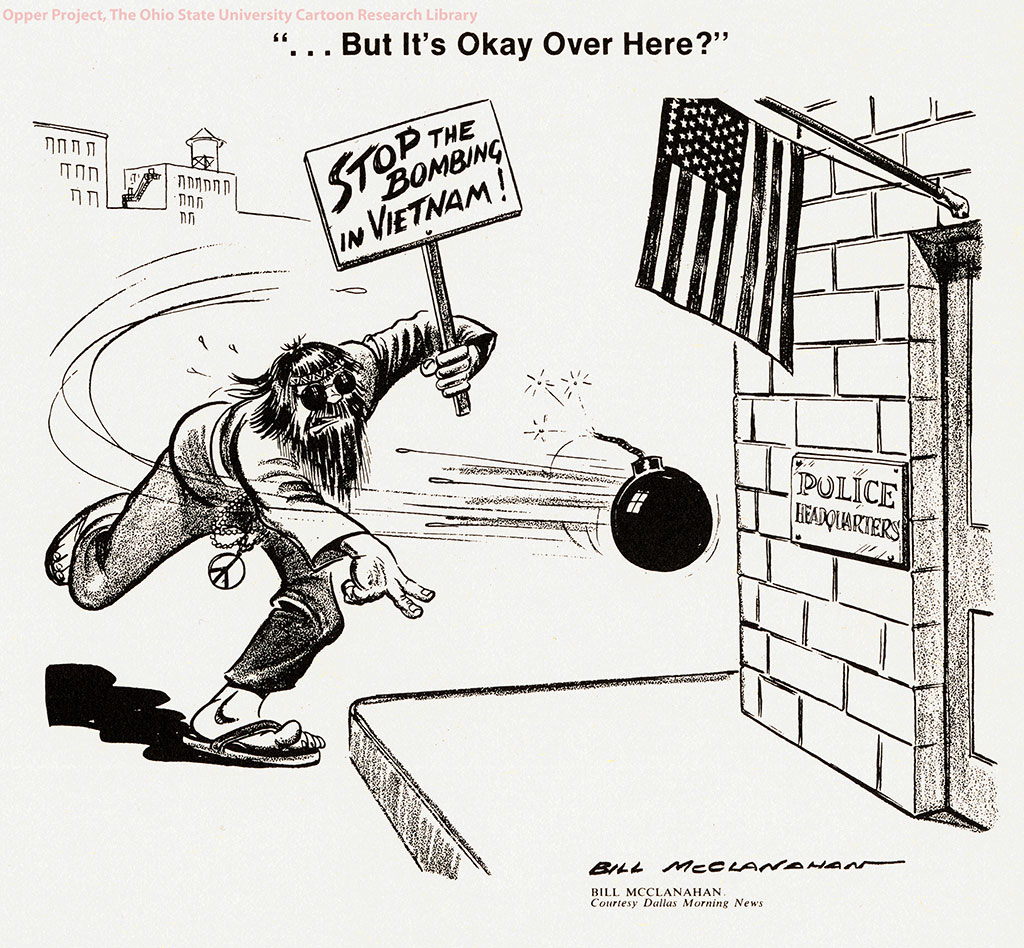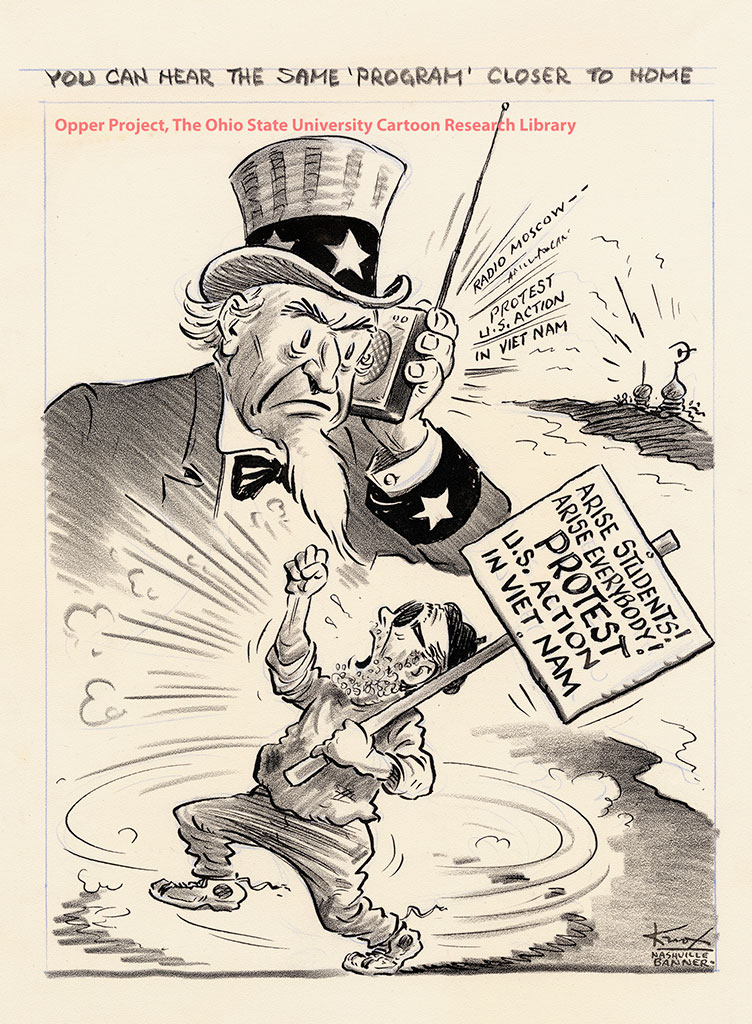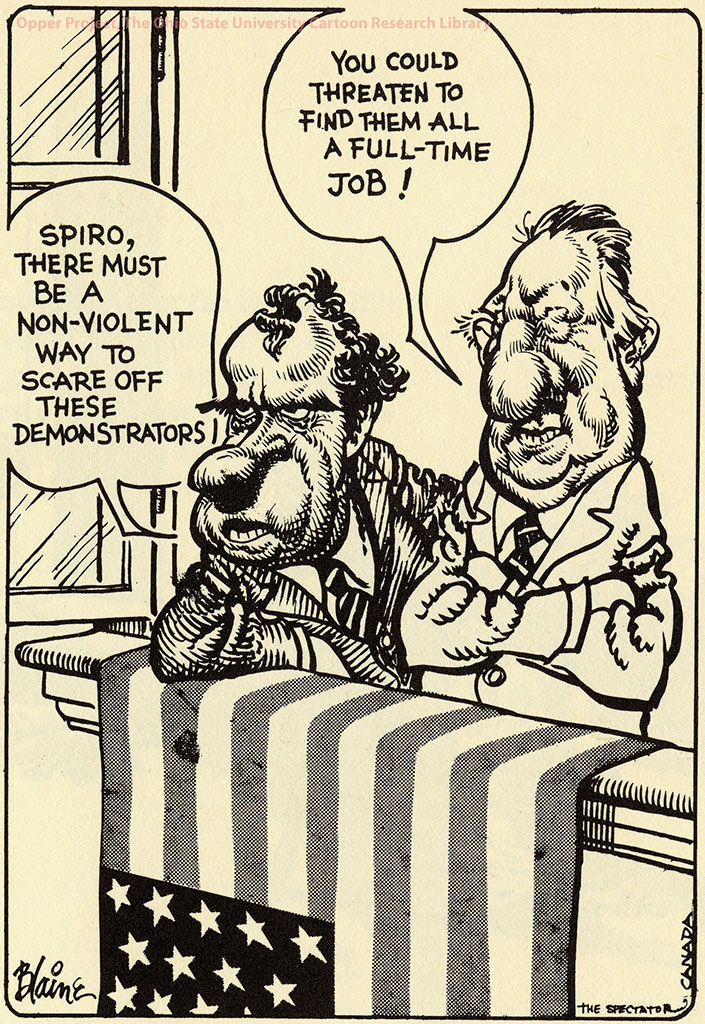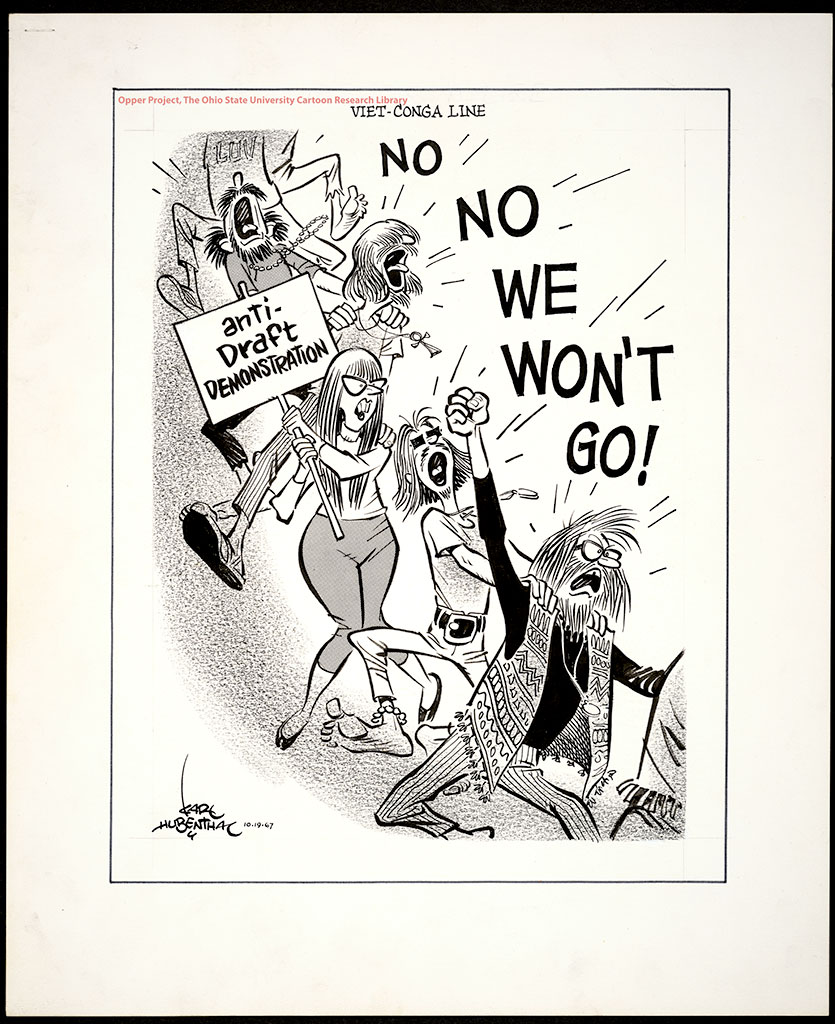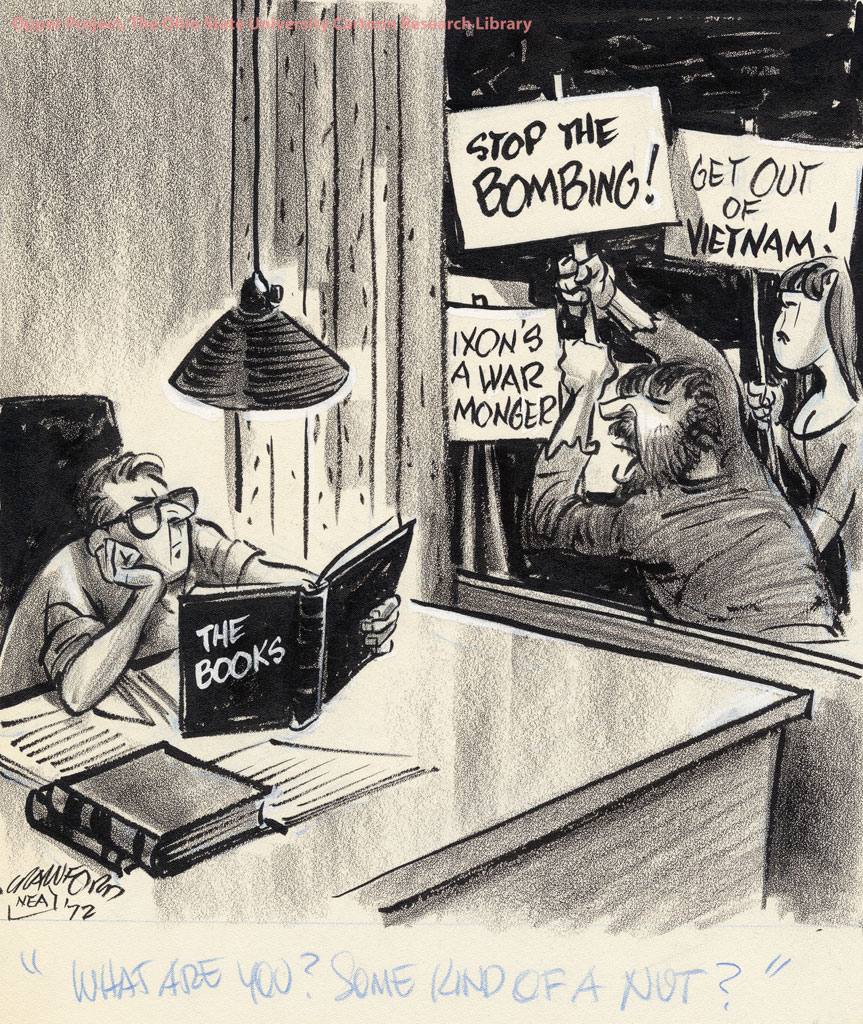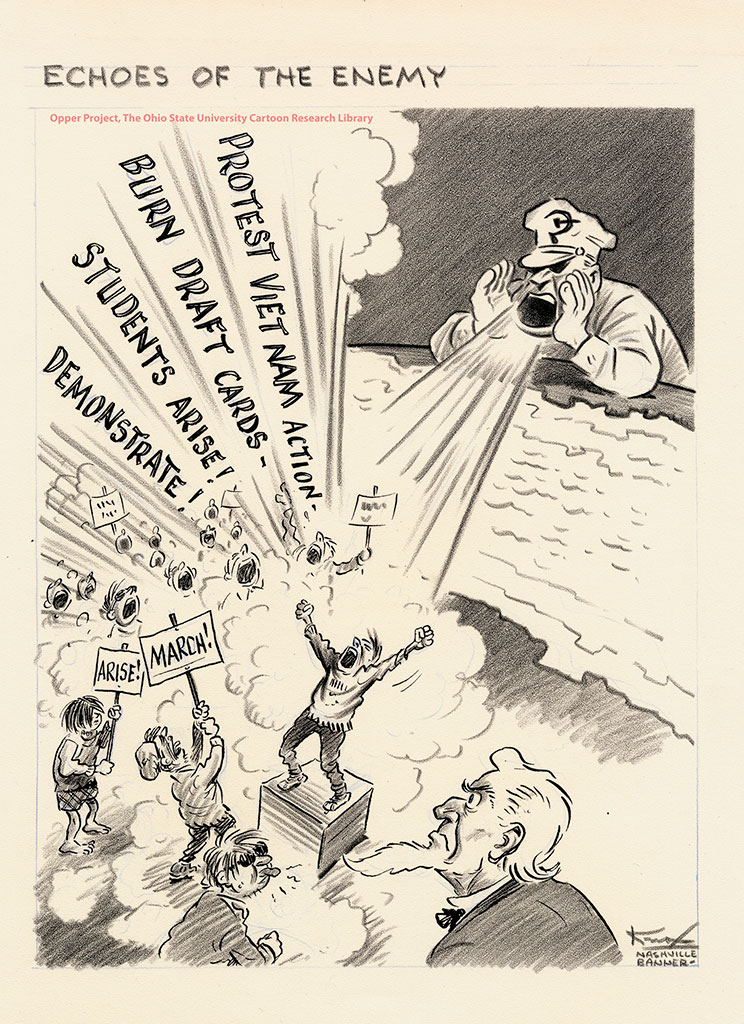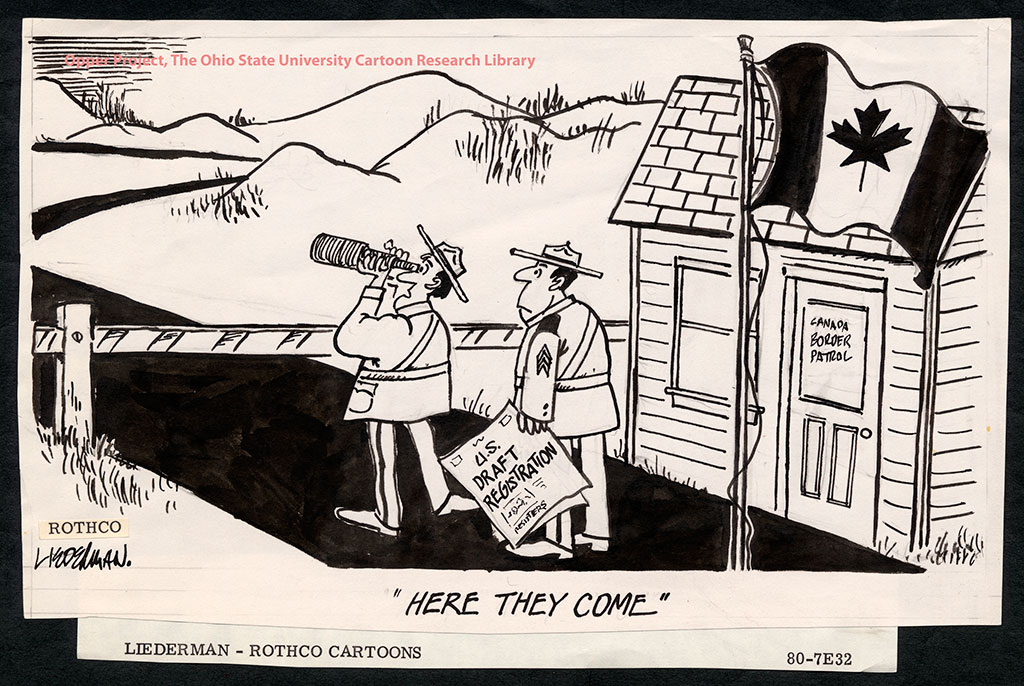Lesson Plan
Ohio Content Standards:
Grade 10: History 8, 13; Citizenship Rights and Responsibilities 1 (d) and 2 (c); Skills and Methods 3; Grade 11: Government 2, Grade 12: Role of Government 1, 2.
Duration of Lesson:
One to two classes
Learning Objectives:
The student will -
- Explain how the Cold War and related conflicts influenced U.S. foreign policy after 1945 with emphasis on the Vietnam War.
- Trace social unrest, protest and change in the United States.
- Describe the ways in which government policy has been shaped and set by the influence of the media and public opinion with emphasis on military policy.
- Explain, using examples, how the media influence the policy agenda and decision-making of government institutions.
- Analyze one or more issues and present a persuasive argument to defend a position.
- Connect learning to present-day issues and forms of protest.
Summary:
Students will use editorial cartoons dealing with the anti-Vietnam conflict movement in order to determine aspects of this protest movement. They will consider the causes, forms and effectiveness of protest as depicted in editorial cartoons.
Materials:
Packet of editorial cartoons 1-7, four copies of each cartoon and a transparency copy of each.
cartoon analysis worksheet.pdf
How Conscription was Designed to Work
Pre-Assessment:
Concepts to understand through discussion or pre-test: draft (selective service), protest, Vietnam Conflict (War).
Instructional Steps:
In eight small groups:
- Link to previous knowledge: brainstorm earlier protest movements in American history, identifying why, how and effectiveness of protests (could include early American patriots, Tories, Hartford Convention, Spot Resolution, Copperheads, conscientious objectors, Bonus March, 1968 Chicago riots, 1863 New York riots, suffragists and Progressives.)
- Each group shares with the class one of their examples.
- Discuss the information in the "How Conscription was Designed to Work" worksheet- identifying the groups of people who had the most to lose as a result of the draft law. (Responses could include the jobless, students, ethnic minorities, and draft-age).
- Give each group one of the cartoons to analyze, using the "Cartoon Analysis Worksheet". Each student records the group's responses on his/her own Worksheet.
- As each cartoon transparency is displayed on the overhead, the group that worked with that one presents to the class their analysis (their responses on the Cartoon Analysis Worksheet). Refrain from making judgments about the cartoons at this point!
- Individually: give each student a "Student Worksheet"
- Round robin single numbered cartoons, between students. Allow 1 - 2 minutes before passing the cartoon onto the next student, rotating the cartoons until each student has had each of the eight cartoons.
Post-Assessment:
Use the following questions to determine if students met the objectives for this lesson:
- What forms did protest take?
- Which cartoons were student rated as most effective and least effective? Why?
Extension Activities:
The students may identify present-day protests (issues and forms). What would they protest? How would they protest? (Possibly leading to writing a letter to a newspaper or elected official.)
...But It's Okay Over Here?
You Can Hear the Same 'Program' Closer to Home
The Threat of a Full-Time Job
Viet-Conga Line
Kissinger and 'The Books'
Echoes of the Enemy
Here They Come

